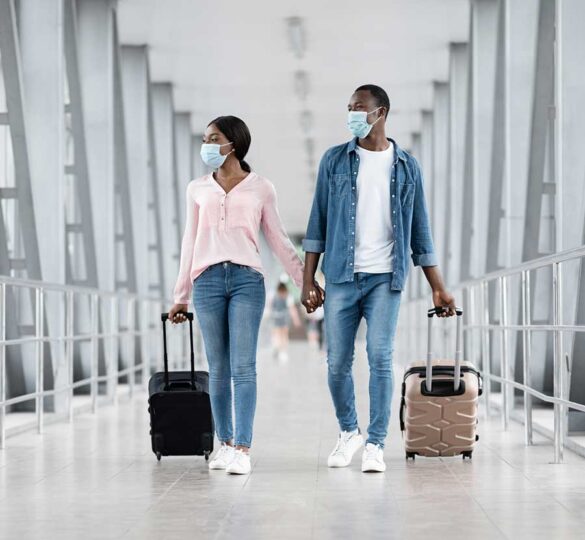Tips for Traveling with Glaucoma Medications

Are you planning a vacation? If so, here are some tips for traveling with your glaucoma medications.
Here are a few tips for traveling with your glaucoma medications if you’re planning a trip. Regardless of your mode of transportation, it’s always essential to keep your medications easily accessible.
If you’re traveling by air, there are some things to consider. First, it’s a good idea to keep your medications in your carry-on bag, so you will have them with you if your luggage is lost or delayed. All prescription medications are permitted in carry-on bags, even those in liquid form.
Be sure you have enough medication for your entire trip. According to the Transportation Security Administration, there is no limit to the amount or volume of medications you may bring in your carry-on bags. With that in mind, it may be a good idea to travel with extra medication in case you are delayed or stranded.
Although the TSA does not require passengers to have medications in prescription bottles, passengers must comply with those states that have individual laws regarding the labeling of prescription medication. Although it’s not a requirement, keeping your medication in the original prescription bottle is a good idea. The TSA recommends having the same name on your prescription labels and boarding pass, but it isn’t required.
Though all other liquids must be packed in a one-quart, zip-top plastic bag in three-ounce or smaller containers, the TSA does not require medications to be packed in a one-quart bag or three-ounce containers. However, you must tell the TSA officer that you have medically necessary liquids at the start of the screening checkpoint process. Medically required liquids will be subject to additional screening, including being asked to open the container.
However, all medication must still be separated from other items (removed from a purse, suitcase, etc.) and may require additional inspection. Medication is usually screened by X-ray; however, if you do not want your medication X-rayed, you may ask for a visual inspection instead. You must make this request before sending any items through the X-ray tunnel.
When traveling out of the country, you may want to bring supporting documentation such as a note from your doctor.
Because the air in airplane cabins tends to become dry, artificial tears may be helpful for use on a long flight. Most pharmaceutical companies recommend storing medications at 59-86° Fahrenheit temperatures. If you are traveling to a hot climate, your eye drops should be fine if they are not subjected to extremely hot temperatures for extended periods, such as more than a few days.
The package insert that comes with your glaucoma medication will provide information regarding storage requirements. If you have questions, you can talk with your pharmacist or call the drug manufacturer’s consumer helpline.
Travel to Different Time Zones
You may want to keep a watch or clock on “home time” and continue to take your medication eye drops at your normal time. However, if you will be visiting for an extended period, it may be easier to adjust your eye drop routine to your destination’s time zone. Taking your drops one to two hours earlier or later is acceptable to re-establish a routine. Try to maintain the same interval between doses and not double up on dosing.
Set Up Reminders
Traveling affects your regular routine, so it can be challenging to remember to take your medication. However, here are some suggestions that may help.
- Use a calendar or your smartphone to keep track of your medications. Mark the calendar when you have taken each one.
- Set up an alarm on your phone, watch, or travel alarm clock to remind you when to take your daily doses.
- If you’re taking day trips, don’t forget to bring your medications with you. Set up reminders, like a sticky note you keep with your wallet, a note on your portable calendar, or whatever works for you.
Talk to your eye doctor. Medication schedules can be complicated, especially if you have been prescribed more than one medication. If you find your medicine routine challenging to follow or understand, ask your eye doctor if there are changes or suggestions that might simplify your treatment regimen.
Most importantly, don’t lose your medication. Safe travels!
Article by Gloria P. Fleming, MD. Posted on March 10, 2022.

Gloria P. Fleming, MD
Dr. Gloria Fleming is a glaucoma specialist and Associate Professor in the Department of Ophthalmology at The Ohio State University’s Havener Eye Institute in Columbus, OH. As a Glaucoma Research Foundation patient education ambassador, Dr. Fleming makes education a key component of her glaucoma practice.